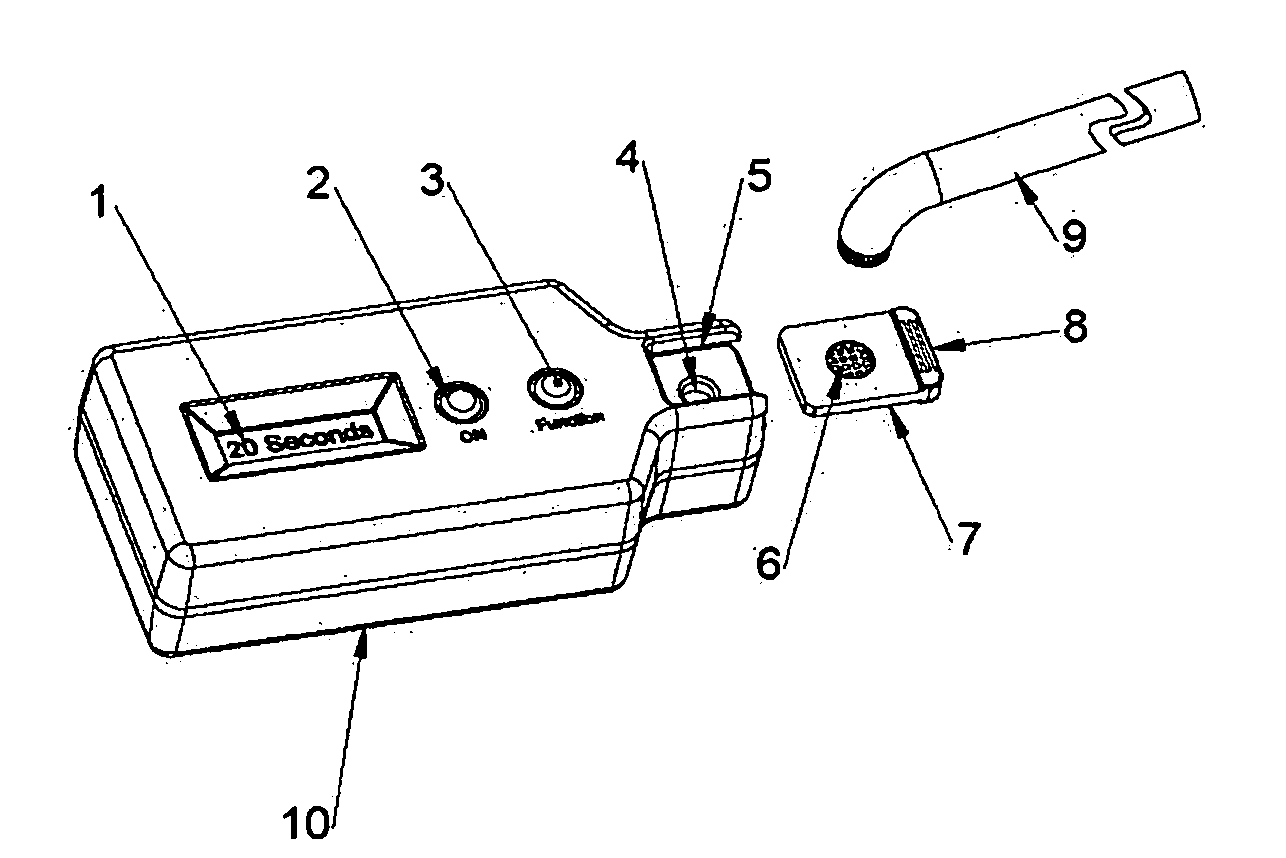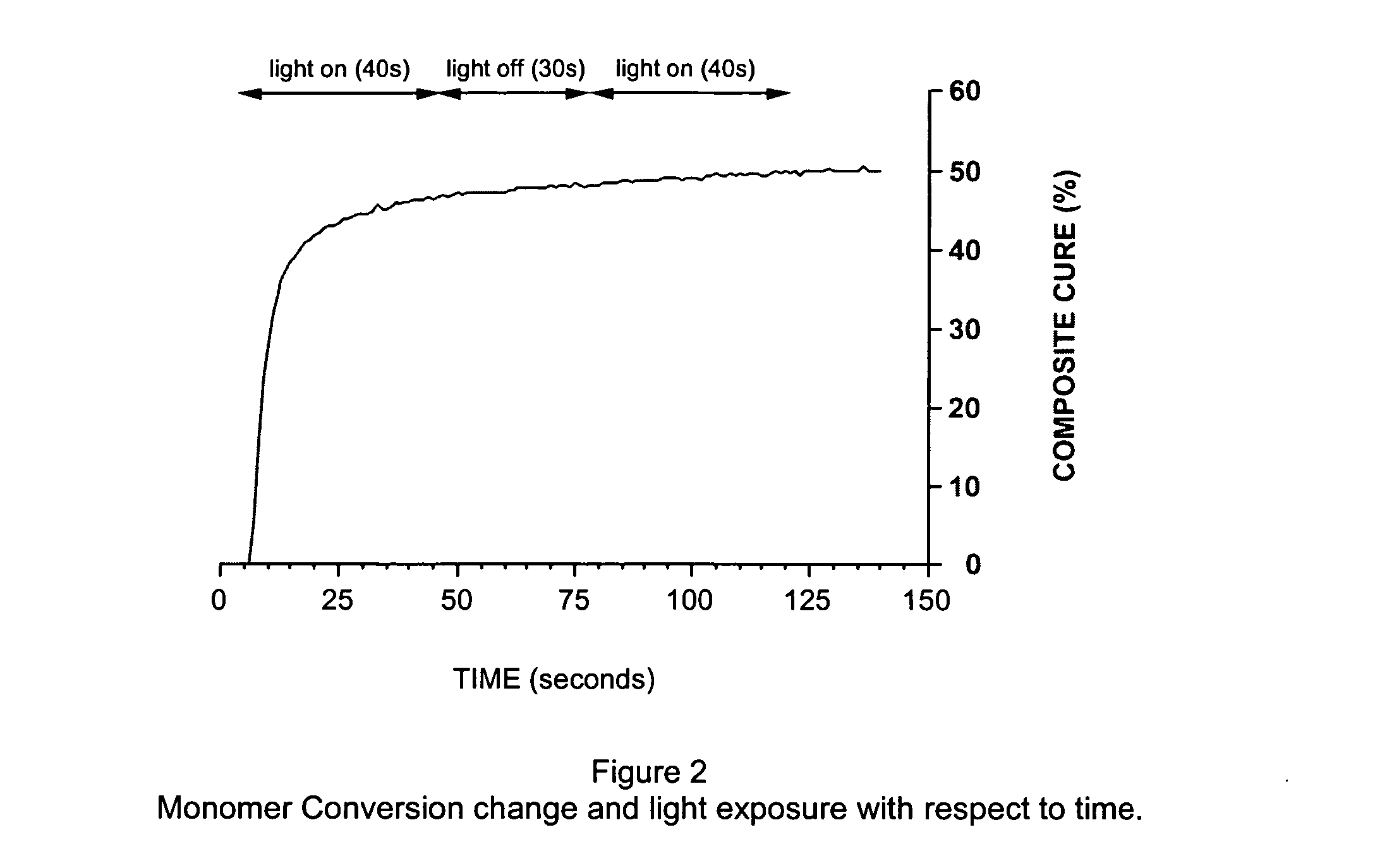Optical composite cure radiometer and method
- Summary
- Abstract
- Description
- Claims
- Application Information
AI Technical Summary
Benefits of technology
Problems solved by technology
Method used
Image
Examples
Embodiment Construction
[0018] The subject Invention results from experimental evidence proving that there Is a direct correlation between the percent composite cure of a light curable resin material and the degree of light transmission through the material as measured by the output of the light detector cell. To substantiate this correlation, the output voltage of a light detector cell in a conventional radiometer was measured based solely upon exposing the detector cell to light. FIG. 1 is a graph showing the relationship between the output of a standard light detector cell with time over two sequential 40 second exposures spaced 30 seconds apart. As can be seen from this graph, whenever the detector cell is subjected to the light source under the same conditions by e.g. turning the light source on and off, a voltage (in millivolts) is generated by the detector cell with the output over each consecutive time period being essentially identical to one another within very dose tolerances. In the tests perfo...
PUM
 Login to View More
Login to View More Abstract
Description
Claims
Application Information
 Login to View More
Login to View More - R&D
- Intellectual Property
- Life Sciences
- Materials
- Tech Scout
- Unparalleled Data Quality
- Higher Quality Content
- 60% Fewer Hallucinations
Browse by: Latest US Patents, China's latest patents, Technical Efficacy Thesaurus, Application Domain, Technology Topic, Popular Technical Reports.
© 2025 PatSnap. All rights reserved.Legal|Privacy policy|Modern Slavery Act Transparency Statement|Sitemap|About US| Contact US: help@patsnap.com



